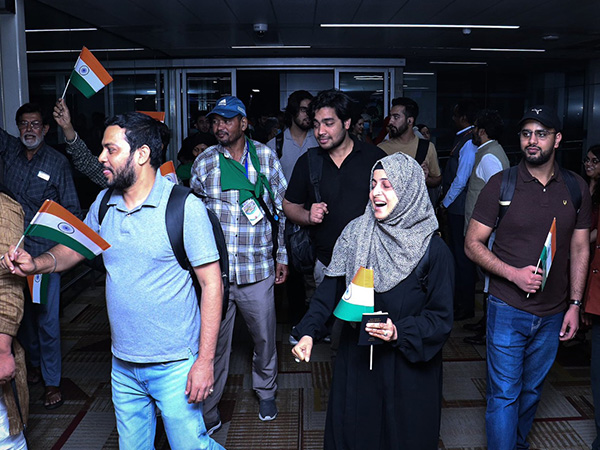
New Delhi: During the conflict between Israel and Iran in June 2025, thousands of Indian nationals found themselves trapped in a dangerous war zone.
The Indian government's response was swift and decisive. Operation Sindhu became India's remarkable record of rescuing its citizens from global hotspots, demonstrating once again that when Indians are in danger abroad, their government will move heaven and earth to bring them home. The operation began on June 18, 2025, as tensions between Israel and Iran escalated into open conflict.
With commercial flights suspended and airspace restrictions tightening by the hour, the situation demanded immediate action. The Ministry of External Affairs, under Dr. S. Jaishankar's leadership, activated its crisis management protocols and launched Operation Sindhu.
What made this evacuation particularly challenging was the complexity of the geopolitical situation. Iran had imposed strict airspace restrictions as part of its military response to Israel. Yet through patient diplomacy and leveraging India's unique position as a nation that maintains dialogue with all parties, Indian officials secured a crucial exception. Iran agreed to open its airspace specifically for Indian evacuation flights, a diplomatic achievement that saved countless lives.
Within days, India evacuated 827 citizens from Iran through special flights from Mashhad. The first flight touched down at Delhi's Indira Gandhi International Airport at 4:30 PM on June 21, carrying relieved citizens who had endured weeks of uncertainty.
A second flight followed that evening. But India's humanitarian commitment extended beyond its own citizens. When Nepal and Sri Lanka requested assistance evacuating their nationals, India immediately agreed. This wasn't surprising to those familiar with India's evacuation history.
Time and again, India has opened its rescue operations to citizens of other nations, embodying the ancient Indian philosophy of "Vasudhaiva Kutumbakam", the world is one family. Nepal's Foreign Minister Arzu Deuba publicly thanked India for its swift assistance, noting that this support reflected the strength of Nepal-India ties. Sri Lanka's Foreign Ministry expressed "sincere gratitude," calling India's actions an example of true partnership. These weren't mere diplomatic pleasantries but genuine appreciation for a neighbor that stepped up when needed most. The operation utilized multiple evacuation routes, showcasing India's operational flexibility.
Flights were organized from Ashgabat in Turkmenistan and Yerevan in Armenia. For those in Israel, India facilitated safe passage through the Taba land crossing into Egypt, where Indian Embassy staff in Cairo provided support and arranged onward travel.
This multi-pronged approach ensured that regardless of where Indians were located in the conflict zone, there was a path home. Operation Sindhu builds on India's impressive track record of citizen evacuations. Since 2014, India has conducted twelve major rescue operations, bringing home over 90,000 people from crisis situations worldwide. From Operation Raahat in Yemen to Operation Ganga in Ukraine, each mission has refined India's capabilities and demonstrated its commitment to citizen welfare.
Embassy staff maintain constant contact with stranded citizens, often recharging their phone cards to ensure communication lines stay open. Ministers personally oversee operations from the field. During Operation Sindhu, embassy helplines worked round the clock, providing not just logistical support but emotional reassurance to frightened citizens.
The diplomatic groundwork for such operations often happens behind the scenes. India's non-aligned foreign policy and its practice of maintaining working relationships with all nations, even those in conflict, creates unique opportunities for negotiation. When Iran agreed to ease airspace restrictions for Indian flights, it was the result of years of patient relationship-building and mutual respect.
These evacuation operations also showcase India's growing capabilities as a regional power. The coordination required, involving the Ministry of External Affairs, Indian Air Force, commercial airlines, and diplomatic missions across multiple countries, demonstrates sophisticated crisis management abilities. Each successful operation enhances India's reputation as a reliable partner and a nation that honors its responsibilities.
Operation Sindhu continues as more Indians are being evacuated from both Iran and Israel. The government estimates around 1,000 citizens will be brought home under this operation. Each flight that lands safely in India carries not just passengers but a message: India stands by its people, always. As conflicts sadly continue to erupt around the world, India's evacuation capabilities will remain crucial. But perhaps more importantly, these operations demonstrate that even in an era of closing borders and rising nationalism, humanitarian cooperation remains possible. When India opens its evacuation flights to Nepali and Sri Lankan citizens, it shows that compassion can transcend boundaries.